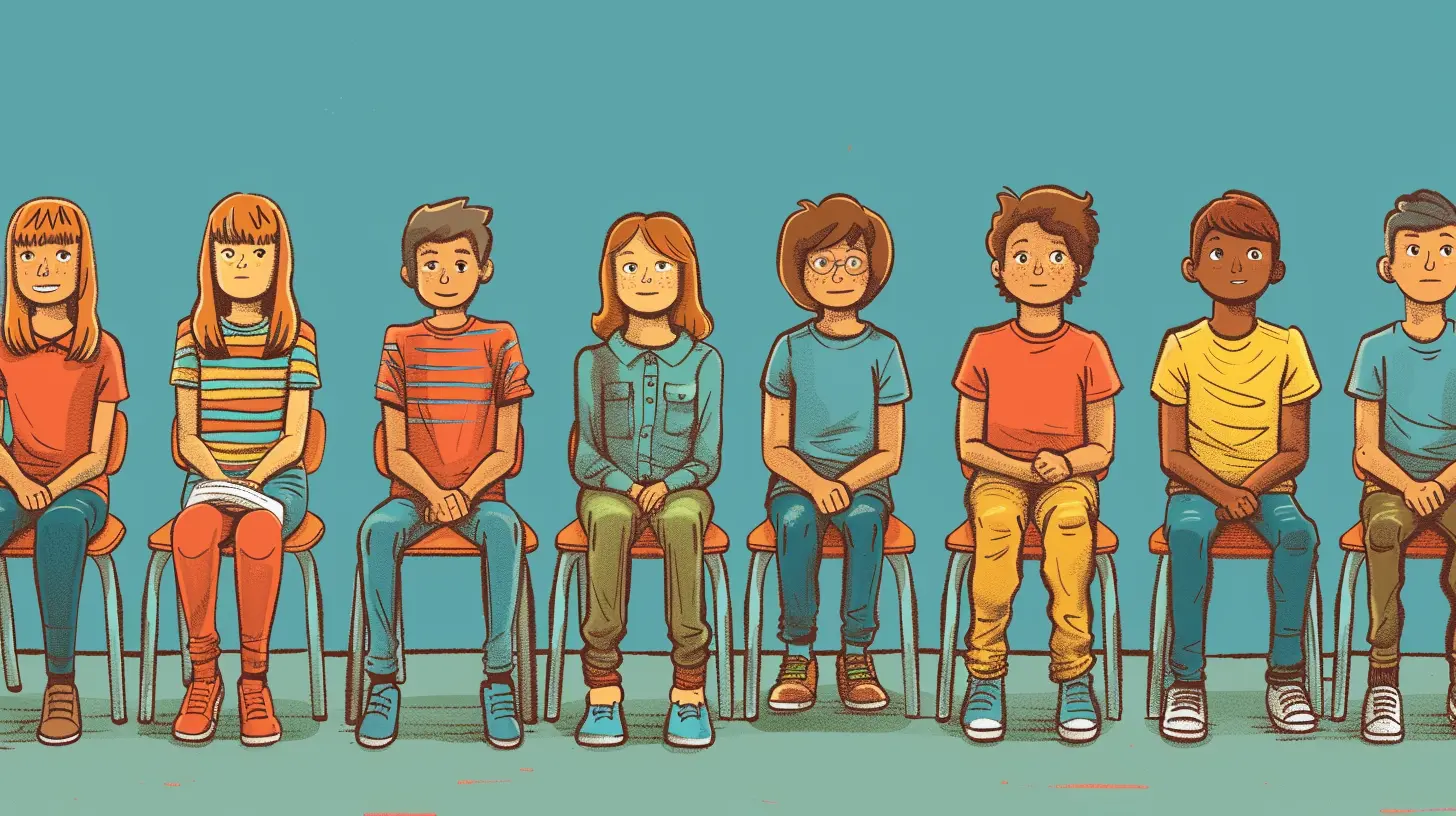How to Support Nonverbal Students in the Classroom
25 August 2025
Let’s talk about something that’s not only important—but often overlooked. Think about the energy in a typical classroom: chatter, discussion, group work, laughter, and sometimes a little bit of chaos. Now imagine trying to navigate all of that without being able to speak.
That’s the reality for nonverbal students.
But here’s the truth: Just because a student doesn’t speak doesn’t mean they don’t have something to say. Our job as educators, parents, and caregivers? It’s to bridge that communication gap and make the classroom a place where every child—spoken words or not—feels seen, heard, and included.
So, if you're wondering how to support nonverbal students in the classroom, you're in the right place. Buckle in, grab a coffee, and let's dive deep into practical strategies that work.
Who Are Nonverbal Students?
First off, let’s clear something up. “Nonverbal” doesn’t always mean completely silent or unable to communicate. It can mean a lot of different things.Some nonverbal students might:
- Use gestures or facial expressions to communicate
- Rely on picture cards, communication devices, or sign language
- Struggle with verbal speech but understand everything that's going on
Nonverbal behavior can be a part of autism spectrum disorder (ASD), cerebral palsy, selective mutism, intellectual disabilities, or other conditions. But here's the kicker—these students are just as curious, creative, and capable as their peers. They just talk in different ways.
Why Traditional Classrooms Can Be Challenging
Let’s face it: most classrooms are built around talking. Discussions, oral presentations, reading aloud—you name it. It’s easy to see how a nonverbal student might feel like they’re sitting on the sidelines.Some issues they might run into include:
- Limited ways to express understanding
- Difficulty asking for help
- Feeling isolated from peers
- Being mistaken for disengaged or uninterested
Sound familiar? Yeah, the system isn’t perfect. But that doesn’t mean we can’t change it.
What Does Support Really Look Like?
Supporting nonverbal students isn’t just about making a few tweaks—it's about creating a classroom culture where communication is flexible, and everyone is valued.So, how do we actually do that?
1. Create a Communication-Friendly Environment
Think of your classroom like a big open chat room—but instead of expecting everyone to type, you have different tools available.Here’s how to get started:
Use Visual Supports
Visuals are your best friend when it comes to supporting nonverbal students. They help organize thoughts, reduce anxiety, and give students a way to "speak" without using words.Try incorporating:
- Visual schedules
- Picture exchange communication system (PECS)
- Communication boards or cards
- Illustrated classroom rules and routines
Even something as simple as a “bathroom” card can make a huge difference for a student who can’t just raise their hand and ask.
Incorporate AAC Tools
Augmentative and Alternative Communication (AAC) tools are game-changers. These include:- Speech-generating devices (think iPads with communication apps)
- Voice output devices
- Text-to-speech software
If you’re not sure where to start, talk to your school’s speech-language pathologist. They’ll help guide you and make sure you’re matching the right tools with each student’s needs.
2. Modify Assignments (Without Lowering Expectations)
Here's a secret: supporting nonverbal students doesn’t mean dumbing things down. Nope. It means giving them alternative ways to show what they know.Instead of oral presentations, try:
- Video recordings using text or symbols
- Poster boards with images and captions
- Slide shows with audio or written narration
- Art projects that demonstrate key concepts
Let’s be honest—some of these are more fun for the whole class anyway.
3. Encourage Peer Interaction & Social Inclusion
Here’s where the magic happens. When nonverbal students feel included and connected, their confidence grows. They start participating more. Friendships blossom. You love to see it.Here are a few ways to boost connection:
Use Buddy Systems
Pair up students so they can help each other during activities. Think of it like academic wingmen—they’ve got each other’s backs.Promote Group Activities
When everyone’s working together, communication becomes more about teamwork than words. Use cooperative learning projects, partner work, or small group labs.Teach Empathy (Early and Often)
Kids are naturally curious, and they notice when someone is different. That’s not a bad thing—it’s a teachable moment.Talk openly about different communication styles. Model inclusivity. Help students understand that being nonverbal doesn’t mean being silent in every way that counts.
4. Collaborate With Specialists
You don’t have to do this alone (and honestly, you shouldn’t). Use the expertise of:- Speech-language pathologists
- Occupational therapists
- Special ed teachers
- Behavior specialists
- Families
These folks bring extra tools, strategies, and insights that can make a world of difference. And when you work as a team, you’re so much stronger.
5. Focus on Strengths, Not Just Needs
Let’s flip the script. Instead of seeing a nonverbal student as someone who “can’t talk,” how about seeing them as someone with unique perspectives and talents?Maybe they’re great at:
- Solving puzzles
- Creating art
- Recognizing patterns
- Using tech tools
- Being a calming presence in the room
Celebrate those things. Build on them. Watch them thrive.
6. Build Routines—and Stick to Them
Want to reduce stress and create safe spaces for nonverbal learners? Routines are key. Predictable schedules help students know what to expect and when to expect it.Use:
- Morning check-ins with visual prompts
- Consistent transitions
- Clear start and stop signals (visual timers work great!)
- End-of-day recaps with symbols or images
The more structure you provide, the more secure and confident your students will feel.
7. Be Patient—and Celebrate Progress
Here’s the thing: progress might not always look the way you expect.You might not get a “thank you” or a verbal response. But maybe you’ll get eye contact today. A smile tomorrow. A button press on a communication device next week. That’s huge.
Celebrate it all.
Supporting nonverbal students takes time, patience, and a good sense of humor. But trust me—it’s worth every second.
Real Talk: Common Mistakes to Avoid
Let’s go over a few pitfalls so you can steer clear.- Don’t assume silence equals lack of understanding. Many nonverbal students are more aware than they can express.
- Don’t do all the work for them. Give support, but also give space. Independence builds confidence.
- Don’t treat AAC tools like a last resort. They should be integrated from the start.
- Don’t ignore the student’s family. Parents and caregivers know their child best—lean on that insight.
Encouraging a Growth Mindset
Yes, communication looks different for nonverbal students—but that doesn’t mean it's any less powerful.Encouraging a growth mindset in your classroom means:
- Believing every child can learn
- Valuing all forms of expression
- Celebrating effort and persistence
- Creating an environment where mistakes are just stepping stones
When the whole classroom buys into this mindset, you don’t just support nonverbal students—you uplift everyone.
The Power of Believing in Your Students
At the end of the day, your belief in a student can be transformative. When you show that you see their potential, care about their success, and are willing to meet them where they are, that’s when bridges are built.Words are just one way to communicate. Let’s make sure every student, voice or no voice, has a seat at the table—and the tools to be heard.
Final Thoughts
Supporting nonverbal students in the classroom isn’t about changing them. It’s about changing the way we teach, the systems we use, and—most importantly—the way we listen.Every student has a story. It’s up to us to help them tell it.
Whether you're just starting out or you've been teaching for years, there's always room to grow. Keep learning, stay curious, and always, always lead with empathy.
Your classroom is more than just four walls and a whiteboard—it’s a launchpad for possibilities.
all images in this post were generated using AI tools
Category:
Special EducationAuthor:

Anita Harmon
Discussion
rate this article
1 comments
Meredith McAuley
Empathy fosters meaningful connections.
September 17, 2025 at 4:26 AM

Anita Harmon
Absolutely! Empathy is crucial in understanding and connecting with nonverbal students, enhancing their learning experiences.


